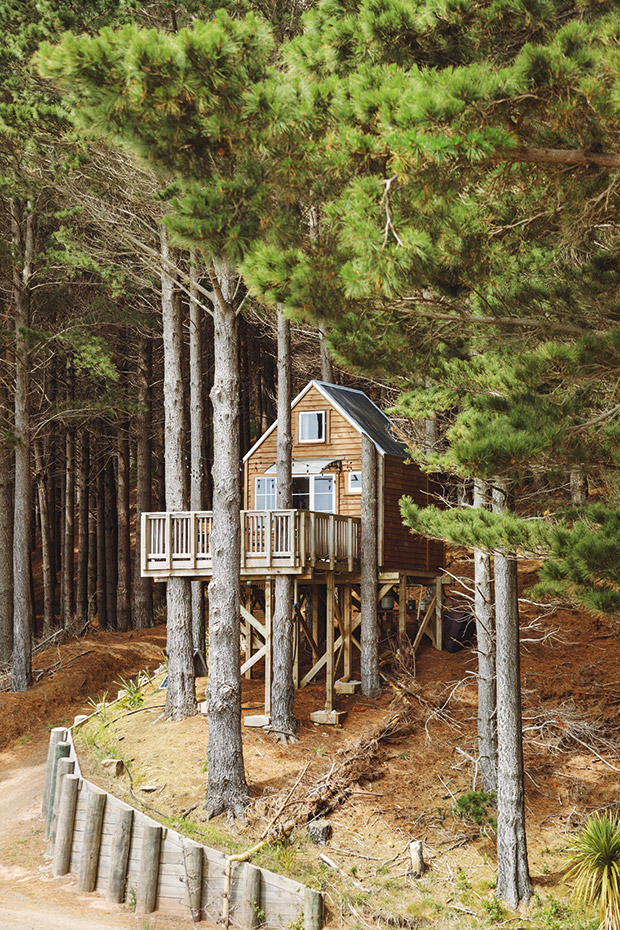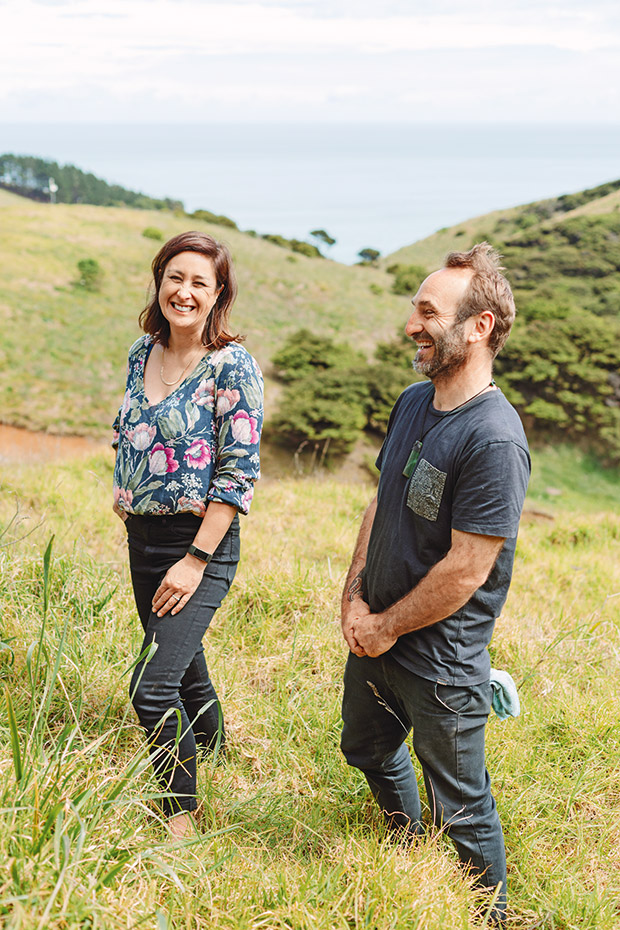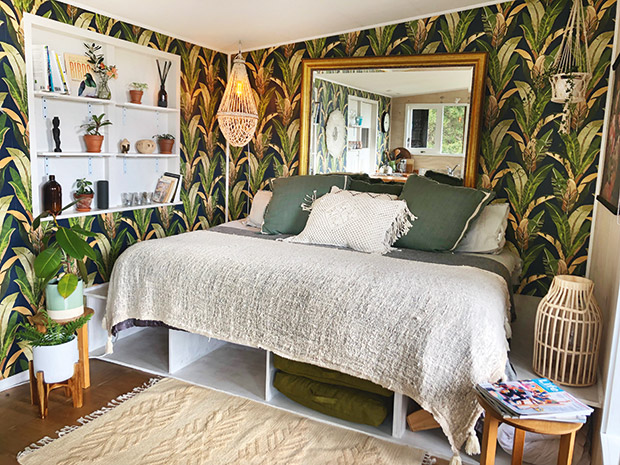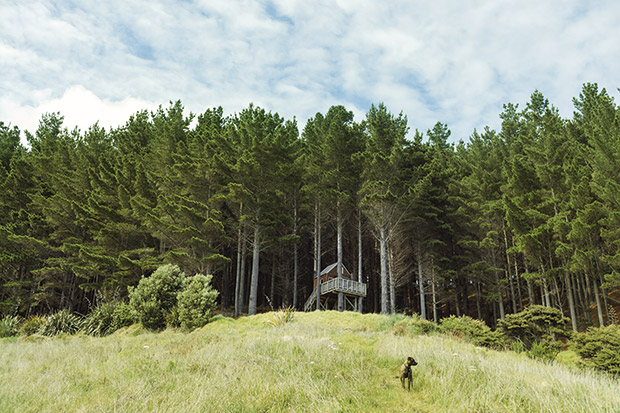6 lessons from a very tiny Airbnb

The tree house is a kitset cabin, sitting on a platform built within a copse of pine trees.
A tennis coach and an IT professional have transformed their not-much-good-for-anything land into a tiny house escape. They share their tips for starting a successful accommodation business on a block.
Words: Nadene Hall Photos: Anne Paar
There’s no power, no phone lines, no cellphone coverage. It’s hilly to steep, mostly covered in trees, and ends at a cliff-face. The grass quality isn’t great, so there’s no point grazing stock, even if its vegetarian owners wanted to.
But this block near Raglan is a profit-making venture for Tara Wrigley and Guillaume Gignoux, thanks to hard work and a little serendipity.

They run Tiny House Escapes, with three unique accommodation options. There’s the LoveNest, a little cabin at the top of the property surrounded by a pine forest; the LoveBus, a converted bus that sits in a paddock with expansive ocean views; and the Treehouse, one of most wish-listed places on Airbnb NZ.
These are their tips for starting an accommodation business on a block.
1. Do it to code
The couple required resource consent and a lot of paperwork for the extra buildings on their block. They hired a resource management consultant to help them and then discovered everyone else wanted to do the same thing at the same time. It was either join a long queue and wait for the paperwork to be done, or get stuck in.
“It was very, very stressful,” says Tara. “We had to go through the whole process for getting land use consent and then building consent, but I ended up writing and doing all of the applications myself. The consultant we were using was so busy (with other applications), it was going to take too long, so I wrote the document, then checked it with them and then sent it off.
“It’s all legal and signed off. It gives us reassurance that we’ve done it in the right way. You’ve got to be aware of environmental impacts, and make sure you’re meeting all the restrictions of the district plan.”
2. Keep it fresh
Every six months, the couple does an interior renovation of one of their accommodations. It includes fresh paint, switching out accessories, adding plants, and clearing things out.

The LoveNest bedroom.
It’s vital that guests get the very best experience, says Tara. “The treehouse is next to be done but we’re so busy (with guests) it’s hard to get in there.”
3. Timing is everything
Their minimum booking is for two days, but with three options often fully booked, it’s a lot of work on top of their day jobs.
“The hardest part is the maintenance, making sure you keep everything nice, so it always feels fresh and clean when new people come in. We do it together… actually, I’m lying a little bit there, and Guillaume is standing right beside me! He probably does most of the accommodation stuff and I try to help out as much as I can. It’s probably at least an hour a day, and when all three need to be changed over on one day, it takes a bit of time to clean and restock everything.”
4. A hot bath for the win
Research shows the most popular Airbnbs have a spa or outdoor bath, but that’s a challenge for solar-powered accommodation.
View this post on Instagram
“We considered a spa, and a lot of people have them, but we’re really conscious of water and power usage, so it wasn’t possible for us,” says Tara. “So we collect rainwater, and we have gas califonts which heat the water as needed, so people can enjoy a bath outside.”
5. Make your online listing very clear
Tara says they’ve had very few complaints – their Airbnb rating is 4.8 stars out of 5 – and most have been because guests didn’t read the listing properly.
“You need to give lots of information right at the beginning so people are fully prepared for what they’re booking, although you can’t help the people that don’t read the description.

“I can think of three people (out of hundreds of guests) who thought the treehouse was bigger. They’ve arrived and gone ‘oh, it’s just tiny’, even though we call it a tiny treehouse.”
6. Have a good website & booking system
The Airbnb system makes booking a breeze, but when their listings took off, things got more complicated. Returning guests started to book directly and referring friends to the Tiny House Escapes website and Instagram pages. Tara now has a computerised booking system that keeps track of both direct and Airbnb bookings.
“We can’t really get much busier, with people booking months in advance. I was trying to do it manually, and I stuffed up and had a double-booking – I was so upset. That forced me into setting up a system so it can’t happen again.”
Love this story? Subscribe now!
 This article first appeared in NZ Lifestyle Block Magazine.
This article first appeared in NZ Lifestyle Block Magazine.
